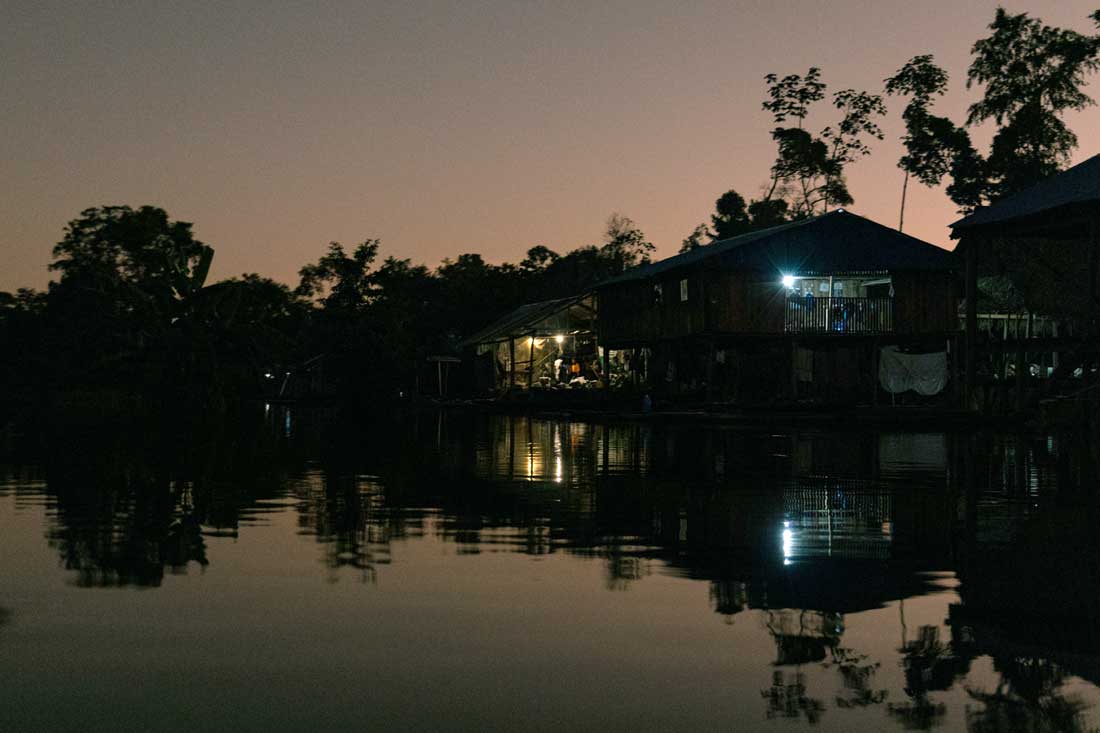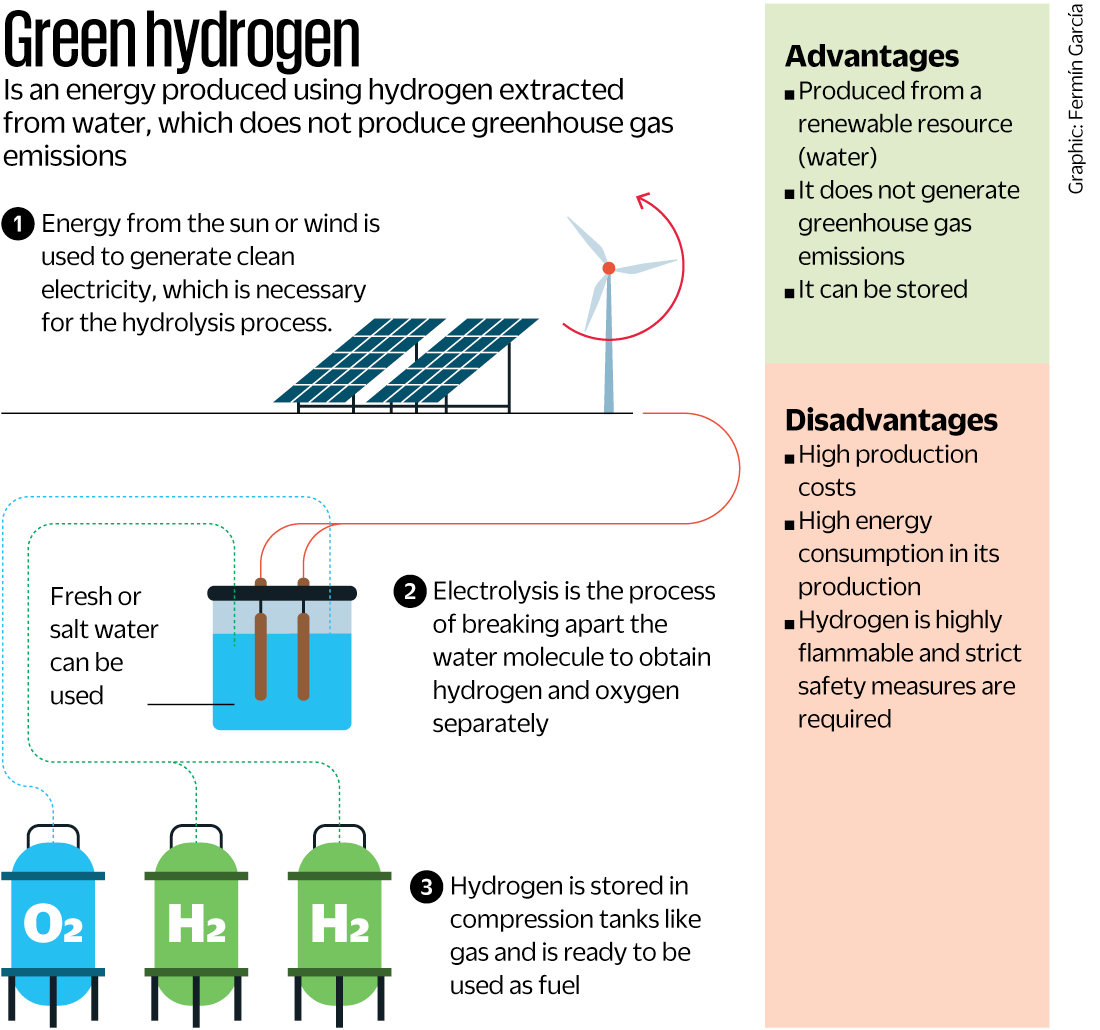By Barbara Fraser
When prospectors struck oil near the Corrientes River in northeastern Peru in 1971, government officials pledged that the new industry would bring development to the Amazonian region of Loreto.
Half a century later, there is relatively little to show for the revenue — known as the canon — that has resulted from oil production in the region. The oil industry spurred the growth of Iquitos, the regional capital and Peru’s largest Amazonian city, which had languished after the rubber boom of the early 20th century.
Now, however, Loreto trails the country in health care and education, barely half the region’s residents are connected to municipal water systems, and Indigenous communities in the oil fields suffer from ongoing exposure to contaminants from more than 1,000 polluted sites that have been recorded.
Oil production has been declining steadily since the 1980s — production from Block 192 peaked in 1982 at 120,000 barrels a day — and most of the wells now produce more water than oil. Although executives of Petroperú, the national oil company, insist that they will revive Block 192, some people are beginning to look toward a post-oil-era future for Loreto.
“Sooner or later, the oil is going to be gone. Sooner or later, the canon, which is declining, is going to end. And what’s going to happen?” said Alberto Ríos, a Peruvian electrical engineer at the Ambato Technical University in Ecuador. “If you have a generation that has lived on oil and you know the next generation won’t have that income, at least prepare it so it has another option, so people can visualize how they’re going to live in the future, knowing they won’t have the oil.”
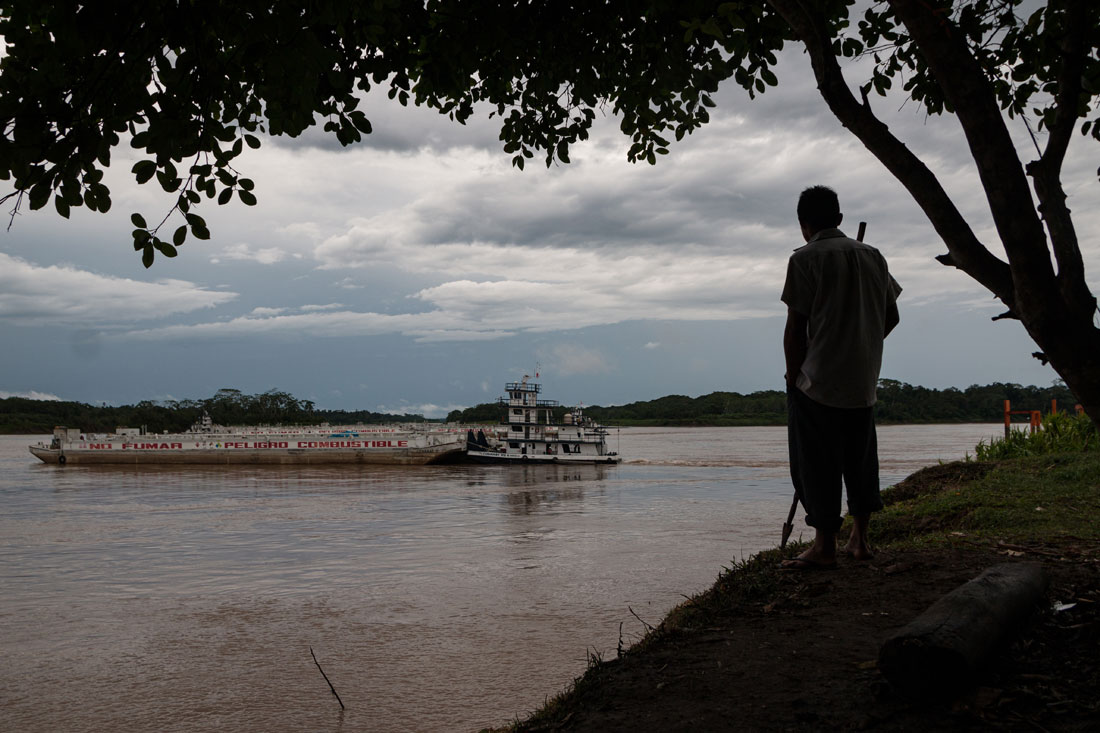
In reckoning with its oil-centered past and preparing for the future, experts say, the region faces several monumental tasks. It must shift away from fossil fuels toward renewable energy, including in Iquitos, a city of about half a million people that has no road to the coast and no connection to the country’s energy grid. Iquitos is the largest city in the Amazon basin that is reachable only by river or by air.
The region will also need to find ways to replace the revenue from oil operations. Although income from the canon has decreased over time, especially in the past year or two when the oil fields have been shut down by protests and operating problems, the loss will still leave a hole in the budget that will be difficult to fill in a region where most employment is informal.
Fifty years of oil operations, including at least two decades without environmental regulations and even more without adequate oversight, have left water, soil and sediments contaminated with industrial waste. There is a shortage of data about the impacts on ecosystems and human health, and experts say billions of dollars would be needed to remediate just the sites that have been identified so far.
Daunting cleanup task
Walking across a grassy field near the Kichwa village of Marsella, Maguen Magipo Vargas paused to dig at the ground with his machete. Instead of scraping away dirt, however, the metal tool clanked on something resembling asphalt — the remains of crude oil that had been burned there after a spill decades ago.
The refinery that operated beside the Tigre River in the 1970s is long gone, but the site remains one of the most polluted in Block 192. Equipment was buried there and spilled crude pooled in pits to be burned off or covered over, Magipo said. Efforts to reforest the site had met with little success. Tiny fruits hung from the branches of a scraggly lemon tree beside a stagnant pond that Magipo said had once been a much larger lake.
The Marsella refinery site is one of 32 places in Block 192 that have been evaluated for remediation under an agreement between the government and four Indigenous federations that represent communities in the block. The organizations, jointly known as the “cuatro cuencas,” or four watersheds, pressured the government for an independent technical study of polluted sites identified by Indigenous monitors and considered priorities.
The U.N. Development Program coordinated the study in Block 192 in 2018, with funding from the Peruvian Ministry of Energy and Mines. The study recommended a combination of methods for remediating the environmental damage, including removal of contaminants and the use of biological agents such as plants or microbes. Crucially, the report urged planning the remediation by watershed, not just cleaning up polluted points, since a point downstream from other contaminated sites could become polluted again.
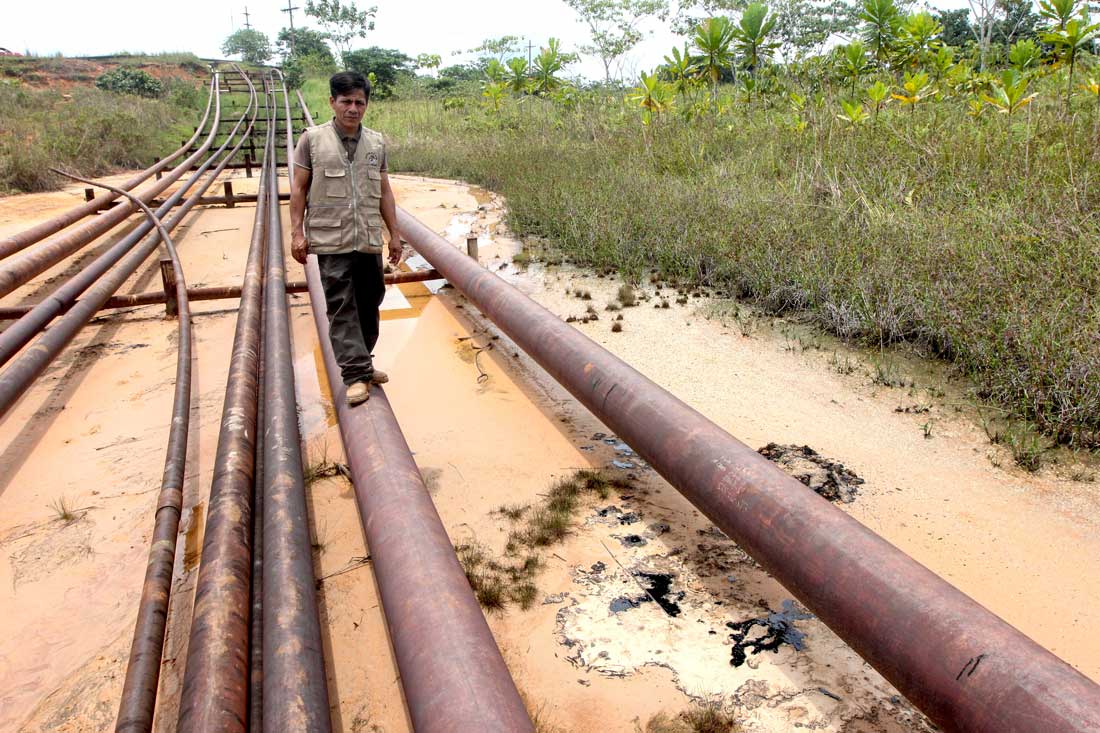
A similar study, conducted in Block 8 in late 2021 and published in June, echoes some of the recommendations of the earlier report, but adds a caution. In the lower parts of the watersheds, in places like the Pacaya-Samiria National Reserve, the flooded-forest ecosystems, with their changeable water flow and low-oxygen peat swamps, are so complex that it may never be possible to remediate the damage done by decades of contamination. In those cases, the best option will be to identify sources of pollutants and devise ways to limit people’s exposure to them, the experts said.
The government set some $15 million aside initially for remediation. The contingency fund for environmental remediation now holds about $111 million, but the study of Block 192 estimates that at least $300 million would be needed to remediate just 92 sites identified in that oil field. Experts say the amount available so far falls far short of what will really be needed to restore polluted ecosystems in the blocks, where Indigenous environmental monitors have identified nearly 2,000 contaminated sites.
A key agreement was reached in 2006 between the cuatro cuencas organizations and Pluspetrol, which operated both oil blocks at the time. The company agreed to pipe all produced water — the hot, salty, metals-laden water pumped out of the wells with the oil — back underground. Peru had made that mandatory for all new oil wells, but had excluded those already in operation.
By late 2009, Pluspetrol was piping all produced water back into wells, but environmental monitors say salty water is filtering from some, including at least one near the community of 12 de Octubre on the Tigre River. Meanwhile, salts and metals from millions of barrels of produced water dumped over four decades are likely to have affected sediments, soils and living organisms in the watersheds, not just in the oil fields but farther downstream, constituting an ongoing environmental health hazard, experts say.
The prospects for cleanup, let alone true ecosystem restoration, are uncertain. Companies operating the blocks blame each other for the pollution, although in a settlement announced in 2015 Occidental Petroleum paid an undisclosed sum to five Achuar communities for pollution in the Corrientes watershed.
Felix Castro, the district attorney for environmental issues in Nauta, said eventual closure of Blocks 192 and 8 will require both remediation of damage and removal of the hundreds of miles of pipes crisscrossing the forests and rivers. It will also require sealing all wells, including some abandoned wells that are leaking. In the village of Miraflores, on the Marañón River, residents complain that when the river rises, oil from one abandoned well oozes to the surface during heavy rains.
In Marsella, on the Tigre River, Magipo cleared vegetation from around a large pipe in a place he called the “chanchería,” or pigpen — so named because it was the place where, decades ago, workers inserted a device called a pig into the pipe to clean it.
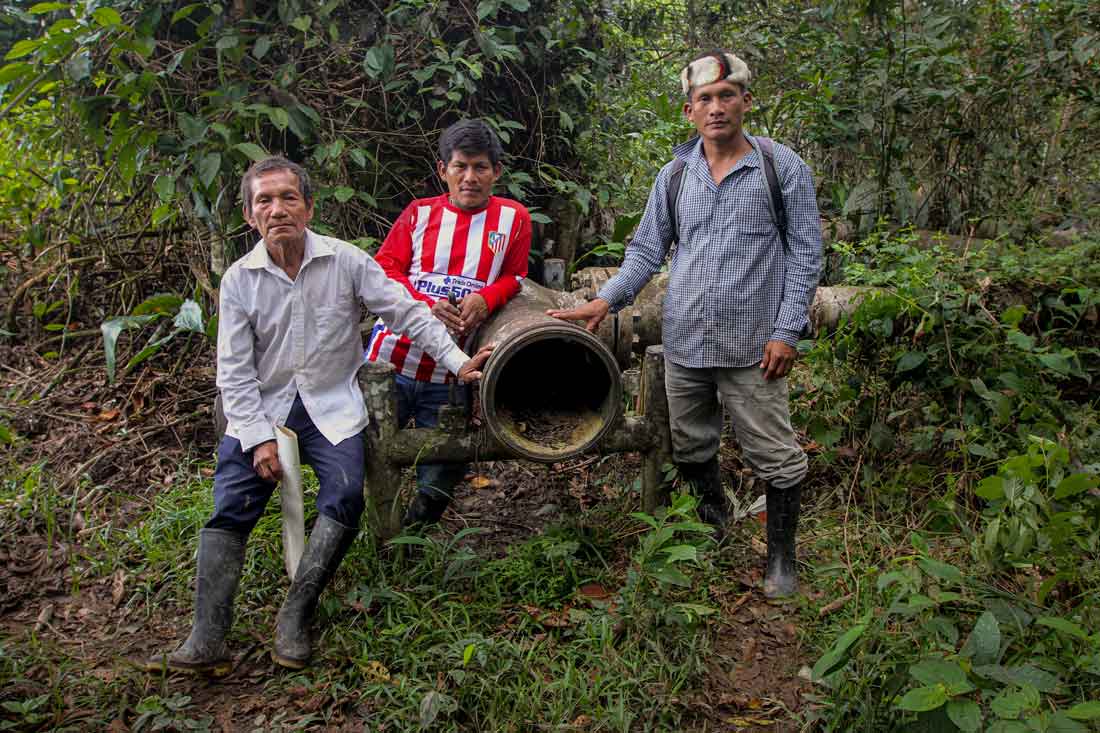
The communities have a complicated relationship with the old pipes littering their territories, said Ecuadorian anthropologist María Antonieta Guzmán-González, who has studied the impacts of oil operations on communities along the Tigre River.
Communities watch over the abandoned pipes, sometimes selling metal for scrap, she said, and protecting them against outsiders who would pilfer them. As long as those things are on their land, she said, there is also the hope that the government will eventually return to clean up the damage done by allowing the tropical forest to have been treated like an industrial zone.
“Abandoned infrastructure is an artifact that allows people to force the state to take responsibility,” she said.
Turning Loreto’s grid green
Although many of the communities in and around Blocks 192 and 8 have electricity for just a few hours a day, if at all, oil keeps the lights on in Iquitos, the regional capital. With no road access from the coast or the highlands, the city of some half a million people also has no link to the country’s energy grid and gets its electricity from a diesel generator.
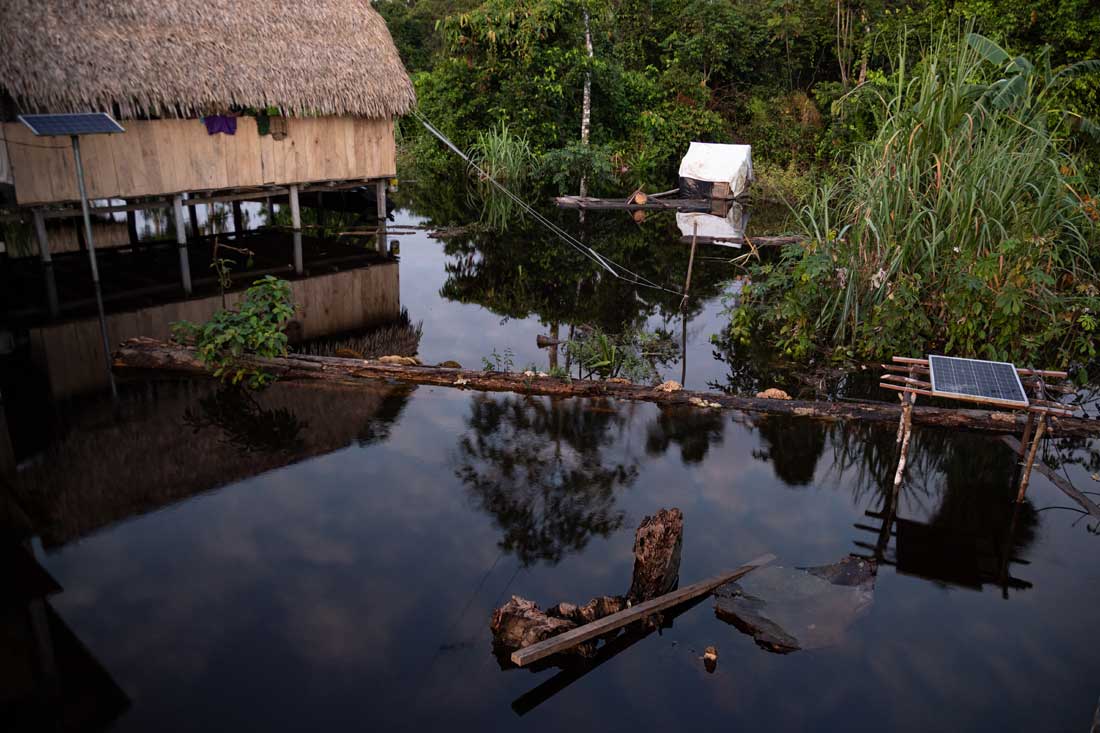
A proposal to run a transmission line from Moyobamba, a city in the neighboring San Martín region, to Iquitos stalled when Indigenous organizations, environmentalists and officials in the Environment Ministry objected that the right-of-way would cut through sensitive ecosystems and encourage migration into the forest by settlers.
If Iquitos is not connected to the national grid, however, and if the oil era is coming to an end, the question becomes how best to shift to greener, renewable energy for the capital, as well as the region’s smaller towns and rural areas.
One possibility is the sun. Although the Amazon region doesn’t receive the strongest sunlight in the country — the southern coastal desert takes that distinction — experts say there’s plenty to power homes and businesses.
“If I had to plan the future of Amazonian villages, cities and towns, I would go straight toward distributed, local production of primarily solar energy,” said Paulo Nobre, a senior researcher at Brazil’s National Institute for Space Research.
“The most challenging thing is not efficiency,” he added. “It’s that you get each village or town independent [so] they don’t depend on oil or electricity arriving from somewhere else.”
For nearly two decades, Peru’s Ministry of Energy and Mines has been installing solar panels in homes throughout the Amazon. In Nueva Unión, on the Chambira River, houses that have no potable water or sanitation have small solar panels that were installed in mid-2021. They’re enough to power a light bulb or two and charge a mobile phone.
Ivo Salazar, who worked in the Ministry of Energy and Mines program in the early 2000s, advocates linking the houses in a community into a mini-network. That, he said, would provide enough electricity to power appliances or other equipment — freezers, for fishers, for example — that could allow families to operate small businesses.
Salazar, who now works for the non-profit Practical Solutions, which has a pilot project installing solar energy in schools in Peru’s Amazonas and Puno regions, notes that concern over energy in Loreto goes beyond establishing a renewable source. Increasing efficiency in the use of energy in Iquitos and upgrading transport in the city are also crucial, he said.
In shifting from fossil fuels to solar energy, an intermediate step could be necessary, said Enio Pereira, a senior researcher at Brazil’s National Institute for Space Research who focuses on the energy transition.
He sees “green hydrogen” — produced by splitting the hydrogen atoms from the oxygen in water, then using the hydrogen for fuel — as a bridge. The process takes energy — which must be from a renewable source, like solar, for the hydrogen to be considered “green” — and is still expensive and not widely used, but it is drawing increased attention, particularly in Europe.
Other possible bridges — such as burning biomass or generating hydroelectricity — have been suggested, but have significant down sides.
Executives at Petroperú, Peru’s national oil company, insist that oil will be necessary for some time to come and are looking for a partner company with which to operate Block 192. Meanwhile, however, another solution may already be on the horizon. In December 2021, the French company EDF Renewables won a 20-year concession to build and operate a photovoltaic power plant that would replace 40% to 50% of the energy currently provided by Iquitos’ diesel generator.
Executives in the company’s Peru office declined an interview and Electro Oriente, the current energy provider, with which EDF would partner, did not respond to interview requests.
Replacing the oil economy
But oil doesn’t just keep the lights on in Iquitos. The oil industry drove the city’s growth in the second half of the 20th century and put some $37 billion in government coffers over the past half-century, according to economist Roger Grández of Iquitos, who has studied the region’s oil economics. And it still accounts for a large share of Loreto’s revenue.
The challenge will be to replace that revenue, as well as to help people develop decent and sustainable livelihoods in rural communities where oil companies have provided jobs and where other economic options are scarce.
But there isn’t consensus about the development model appropriate for a region where the economy has always been based on the extraction of natural resources — animal hides and wild game meat, rubber, timber, oil and, most recently, gold mined by illegal dredges mainly on the Putumayo, Napo and Nanay rivers. Commodity crops — legal ones, like cacao and coffee, as well as illicit drug crops like coca, the active ingredient in cocaine — have also made inroads in Loreto in the past couple of decades, resulting in deforestation.
For biologist José Alvarez, who heads the Environment Ministry’s biodiversity office, the future lies in a bioeconomy based on better management of fisheries and wildlife to provide sufficient protein in communities where malnutrition and anemia persist, along with harvesting of fruits, fibers and other products from the forest without cutting trees.
His vision is similar to a proposal made by a group of scientists at the U.N. climate summit in Glasgow, Scotland, in 2021. Dubbed “Amazon 4.0,” that model also emphasizes a nature-based economy, along with putting modern technologies into the hands of local communities.
A study of Loreto by researchers at Harvard University concluded that a lack of coordination and information are the main obstacles to economic growth in Loreto in areas like tourism and the development of products such as the ones Alvarez envisions. So far, bioeconomy initiatives are incipient and operate on a small scale, and it is not clear how soon — or even whether — they will represent a major share of income for the region.
The region faces other economic challenges, as well. More than 80% of Loreto’s economy is informal, according to the Harvard study, compared to about 72% for the country as a whole, and illegal activities — drug crops and drug trafficking, illegal logging and, increasingly, illegal gold dredges along rivers — expanded during the coronavirus pandemic.
Most recently, a group of business people and government officials have launched a campaign aimed at pressuring Peru’s Congress to repeal legislation that protects semi-nomadic Indigenous groups living in isolation in Loreto. The group claims that setting aside swaths of forested land to protect those groups — whose very existence it questions — is an obstacle to the region’s development, including new oil exploration.
Petroperú continues to promote oil production in the region, and some Indigenous leaders have taken an ambiguous position. Beltrán Sandi, the new president of ORPIO, the regional umbrella group of Indigenous federations, said he is not opposed to oil drilling as long as it does not pollute the environment and it brings benefits to local communities. Others, however, urge a transition away from fossil fuels.
One group that has taken a firm stand are the Wampis, who in 2015 declared themselves a nation and formed an autonomous territorial government. In March 2022, in a meeting with the U.N. special rapporteur on toxic substances and human rights, representatives of the Wampis nation and the National Achuar Federation of Peru reiterated their opposition to oil operations in Block 64, in the Pastaza watershed.
The block is in the hands of Petroperú now, but the state-run company lacks the financing to operate it without an international partner. At least four international oil companies have withdrawn from that block over the years because of protests by Indigenous communities, and it seems increasingly unlikely that a partner willing to invest in new exploration will be found.
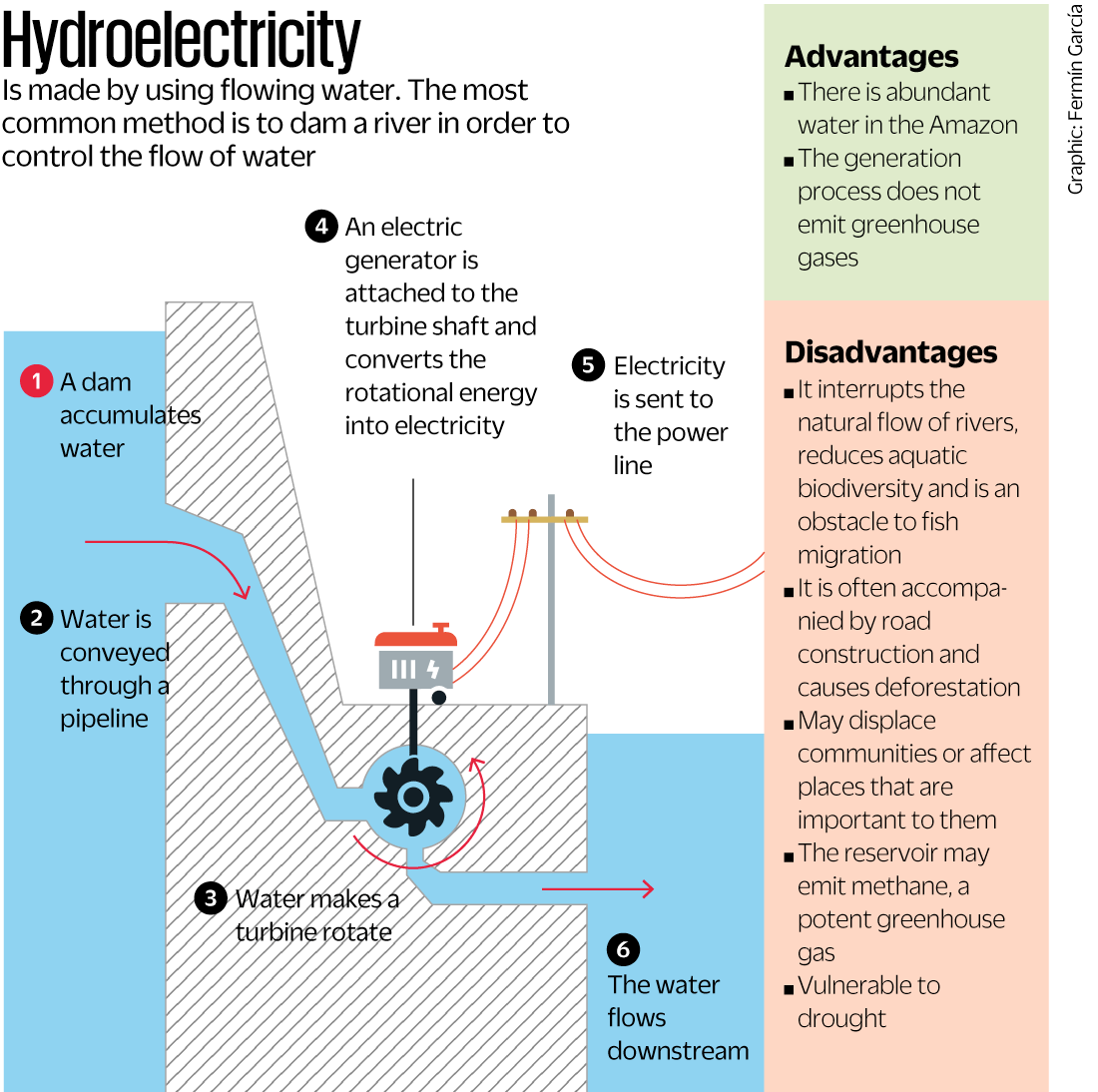
Most of Peru’s intact tropical forest is in Loreto, making the region crucial for meeting Peru’s commitments under international climate accords, as deforestation, mainly for changes in land use from forest to agriculture, is the country’s greatest source of greenhouse gas emissions.
International groups, including the International Energy Agency, have also called for a ban on new oil field development and a sharp reduction in production to keep global warming to no more than 1.5 degrees Centigrade above pre-industrial levels.
With recent offshore oil discoveries in Guyana and Suriname, the oil in Amazonian Peru — which is difficult to extract, and which has been a source of increasing conflict with local communities — is unlikely to be attractive to outside investors. And former Environment Minister Manuel Pulgar-Vidal, who is now interim head of the International Union for the Conservation of Nature’s Climate Crisis Commission, has pointed out that if climate change should push Amazonia past a tipping point, turning the forest into tropical savannah, Loreto would need to prepare for an even more drastic future.
Some ideas are already being tried on a small, local scale by Amazonian Indigenous communities, said Shapion Noninga, technical secretary of the Wampis Nation. They include things like harvesting aguaje, the fruit of a palm (Mauritia flexuosa) without felling the tree, planting and harvesting a non-invasive bamboo, making banana flour, fish farming and wild fish management. Those things need to be combined with environmental education for children, he added.
Noninga would like to bring scientists together with Indigenous people to discuss the possibilities and draw up a proposal. He dreams of a plan created jointly by scientists and Indigenous people, not just for the Wampis, and not just for Peru, but one that could be embraced by all the Indigenous people in Amazonia.
“Our future,” he said, “is one without petroleum.”
